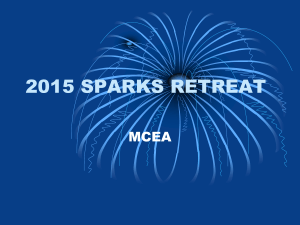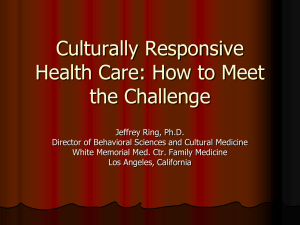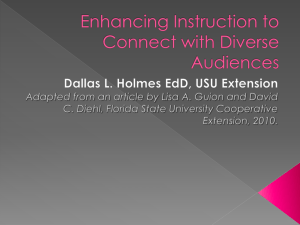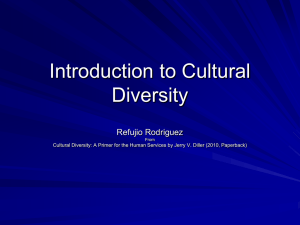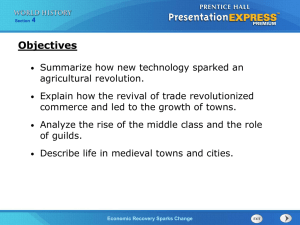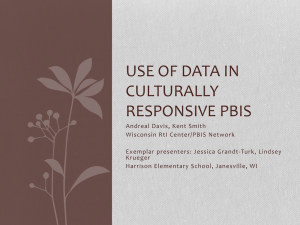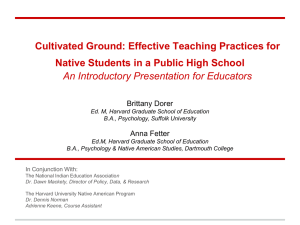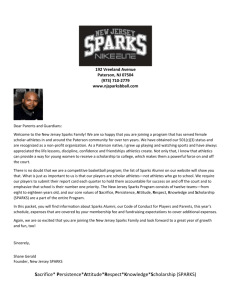Instructional Approaches to Build Culturally
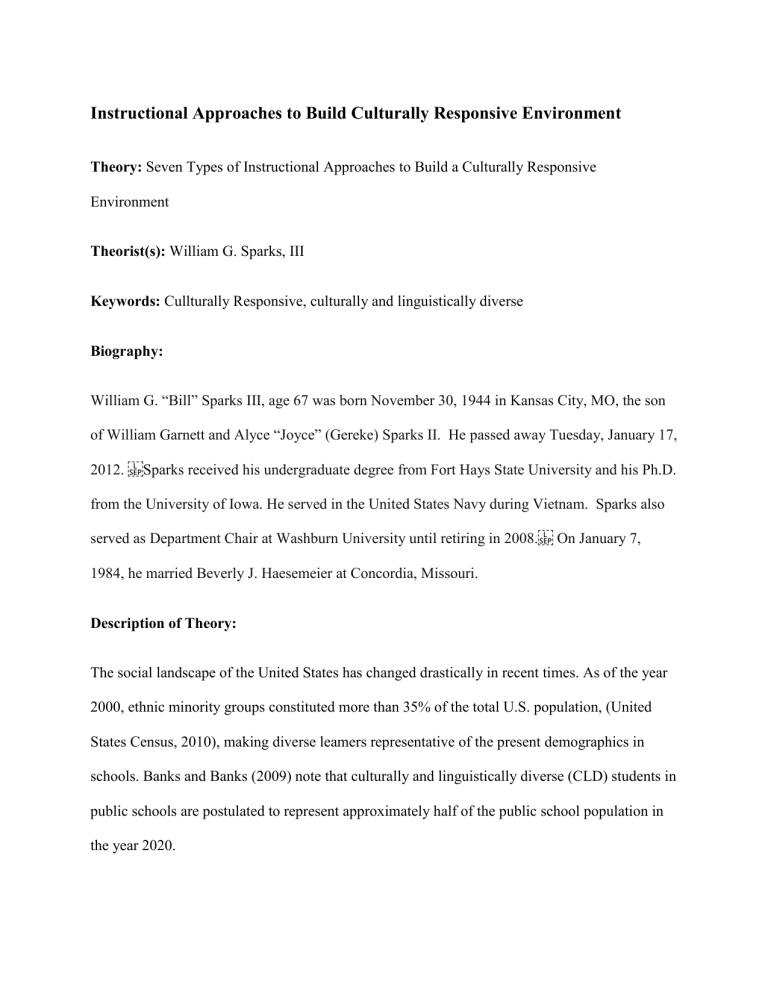
Instructional Approaches to Build Culturally Responsive Environment
Theory: Seven Types of Instructional Approaches to Build a Culturally Responsive
Environment
Theorist(s): William G. Sparks, III
Keywords: Cullturally Responsive, culturally and linguistically diverse
Biography:
William G. “Bill” Sparks III, age 67 was born November 30, 1944 in Kansas City, MO, the son of William Garnett and Alyce “Joyce” (Gereke) Sparks II. He passed away Tuesday, January 17,
2012. Sparks received his undergraduate degree from Fort Hays State University and his Ph.D. from the University of Iowa. He served in the United States Navy during Vietnam. Sparks also served as Department Chair at Washburn University until retiring in 2008. On January 7,
1984, he married Beverly J. Haesemeier at Concordia, Missouri.
Description of Theory:
The social landscape of the United States has changed drastically in recent times. As of the year
2000, ethnic minority groups constituted more than 35% of the total U.S. population, (United
States Census, 2010), making diverse leamers representative of the present demographics in schools. Banks and Banks (2009) note that culturally and linguistically diverse (CLD) students in public schools are postulated to represent approximately half of the public school population in the year 2020.
William G. Sparks initial work began in the early 1990s to investigate physical education teachers’ knowledge and skills of current diversity issues in the American educational system.
Sparks and Waymen (1993) found while teachers in urban areas appeared to have a better understanding of the importance of designing a curriculum that included characteristics of ethnic diversity, teachers in rural areas had a greater appreciation of the customs and traditions of differing cultures, and seemed to appreciate the importance of providing curricular opportunities that promoted interaction between students of different ethnic groups. Sparks focus (1994) moved from teacher actions to teacher preparation through training and in-service programs.
Culturally Responsive Teaching (CRT) recognizes students from differing cultures learn in different ways. Well-prepared and effective teachers recognize and purposefully develop/update their curriculum to address these differences. The CRT approach focuses on the learning strengths of students; as well as establishes an environment that r continuously resolves the mismatch between the home and school cutlures. Sparks (1994) believed that these seven CRT strategies prepare teachers to develop and curriculum and manage classroom environments to meet demanding diverse cultural and social groups environments.
In Francesina R. Jackson’s work (1994), she suggests a seven-step strategy to build culturally responsive teaching. William G. Sparks (1994) took these strategies, modified them and used these strategies successfully in teaching physical education. The seven instructional approaches provided to physical education in-service teachers include: (1) building trust; (2) becoming culturally literate; (3) building different methodological approaches; (4) using effective questioning techniques; (5) providing effective feedback; (6) analyzing instructional materials; and (7) establishing positive home-school relations.
Approach 1—Building trust. Teachers who build trust have been able to engender in their students a level of confidence and belief that what they do in that classroom is worthwhile.
Teachers need to examine their relationships with their students to determine how effectively they are building the trust factor. (p. 299)
Approach 2—Becoming culturally literate. Historically, “minority” people have had to be bicultural, bi-dialectical, and bi-cognitive in order to achieve in mainstream U.S. society.
Teachers need to learn about their students’ language, interactional style, learning styles, and values.
Approach 3—Building different methodological approaches. While the research shows that students have their preferred learning styles and that these are culturally specific, U.S. schools are in a culture that is Eurocentric and middle class. Educational rewards are based upon students’ ability to focus on tasks and verbal instructions versus peers in the environment; information processing that is linear and logical to a specific cultural norm; and low kinesthetic based learning that is repetitive and focused on a singular task. Teachers need to vary or differentiate instruction.
Approach 4—Using effective questioning techniques. Researchers highlight the fact that teachers directed too few higher order questions to all students, especially to those for whom they had low expectations. Higher Order Questions (HOQ) suggest to students possess the knowledge, values and characteristics that will allow them to be successful. HOQs allow all students to see themselves as knowledge producers rather than knowledge consumers.
Approach 5—Providing effective feedback. Too often students of color or cultural variance receive feedback that relates to personality variables or the neatness of their work rather than to
academic quality. Teachers need to make a conscious effort to analyze the quality of feedback they give all students, and apply a special degree of sensitivity to their feedback to nonmainstream students.
Approach 6—Analyzing instructional materials. Teachers need to become familiar with criteria for assessing the quality of cultural sensitivity in instructional materials. Some of these criteria might include the following: a) accurate portrayal of the perspectives, attitudes, and feelings of the groups being studied; b) inclusion of strong ethnic characters in fictional works; c) ethnic materials devoid of racist concepts, cliches, phrases, or words; and d) historically accurate factual materials.
Approach 7—Establishing positive home-school relations. Educators are well aware of the importance of parental support. Unfortunately, overall, fail to take a proactive stance toward establishing positive relationships or eliciting parental support early in the school year. Teachers typically call parents when students experience difficulty, especially for nonmainstream students.
Overall, in-service teachers revealed that they may personally respect and value cultural diversity, however may not take actions or implement instructional approaches that are culturally responsive in nature. However practicum or field-based experiences are helpful to change inservice physical education teachers‘ perceptions of their multicultural knowledge and attitude and their cultural competency (Sparks et al., 1996).
One way to provide teachers with new information on cultural differences is to implement diversity-based training programs for novice physical education teachers to experience teaching a diversity of learners, thereby preparing them with culturally responsive instructional approaches (Sparks, 1994).
Theory Measurement and Instrumentation:
Surveys were implemented with in-service physical education teachers to investigate their background information and understanding of multicultural education.
Prepared by: Aisha Ali
References:
Jackson, F.R. (1994). Seven strategies to support a culturally responsive pedagogy. Journal of
Reading , 37 (4), 298-303.
Sparks, W., & Wayman, L. (1993). Multicultural understanding in physical education: A comparison of urban and rural perspectives. Physical Educator, 50 , 58-58.
Sparks, W. G. (1994). Culturally responsive pedagogy: a framework for addressing multicultural issues. Journal of Physical Education, Recreation and Dance, 65 , 33-36.
Sparks, W., & Verner, M. E. (1995). Intervention strategies in multicultural education: A comparison of pre-service models. Physical Educator, 52 (4), 170-186.
Sparks, W. G., Butt, L. K., & Pahnos, M. (1996). Multicultural education in physical education: A study of knowledges, attitudes and experiences. The Physical Educator, 53 , 73-86.
